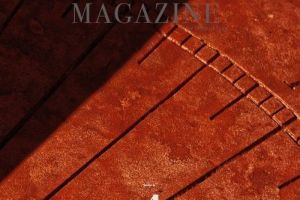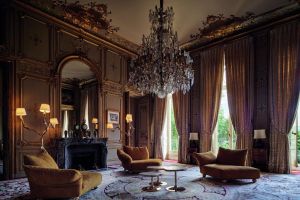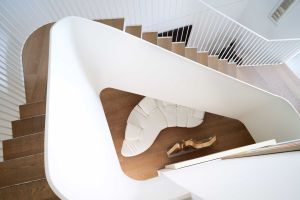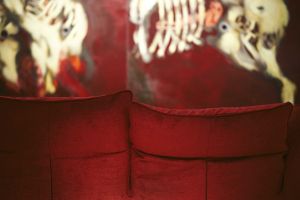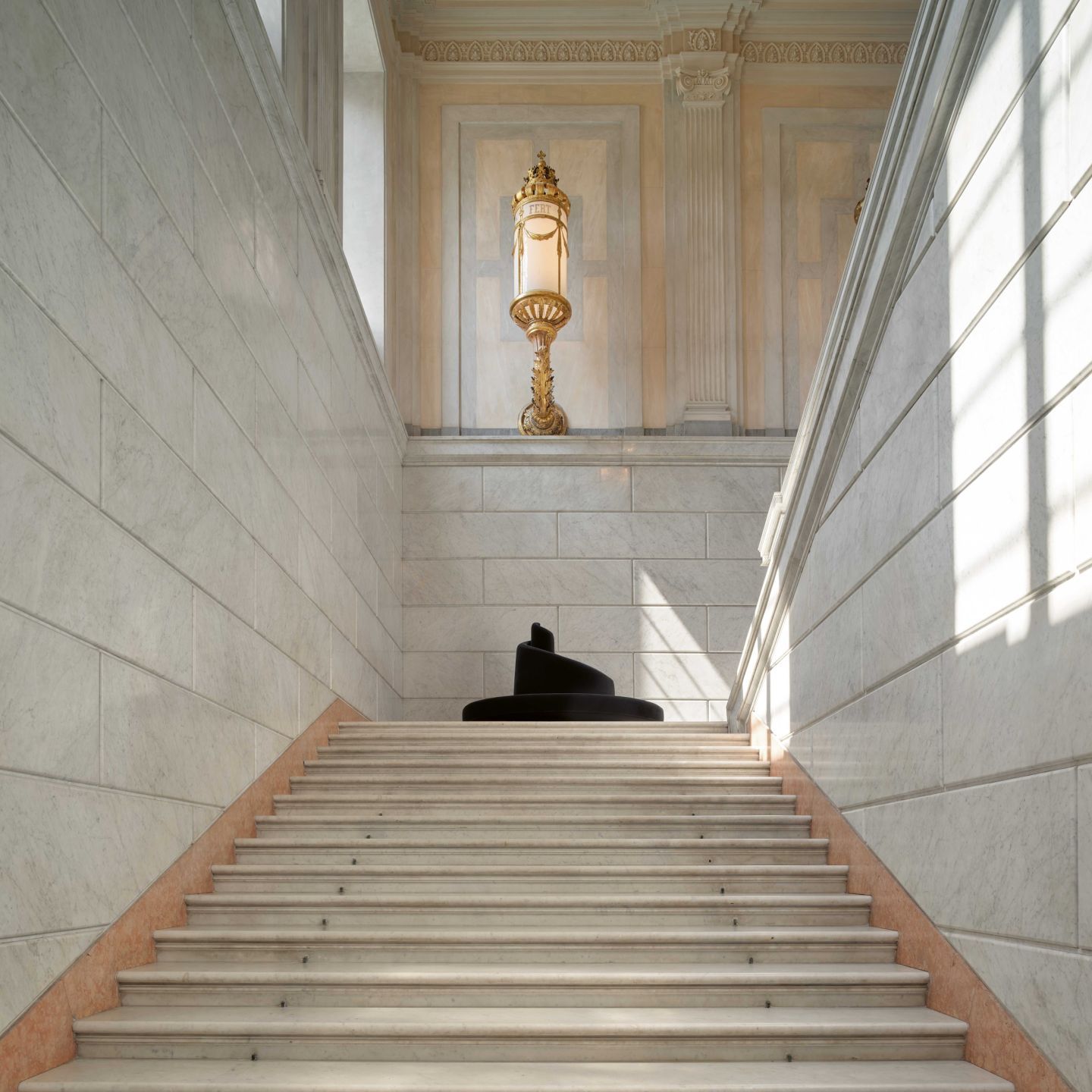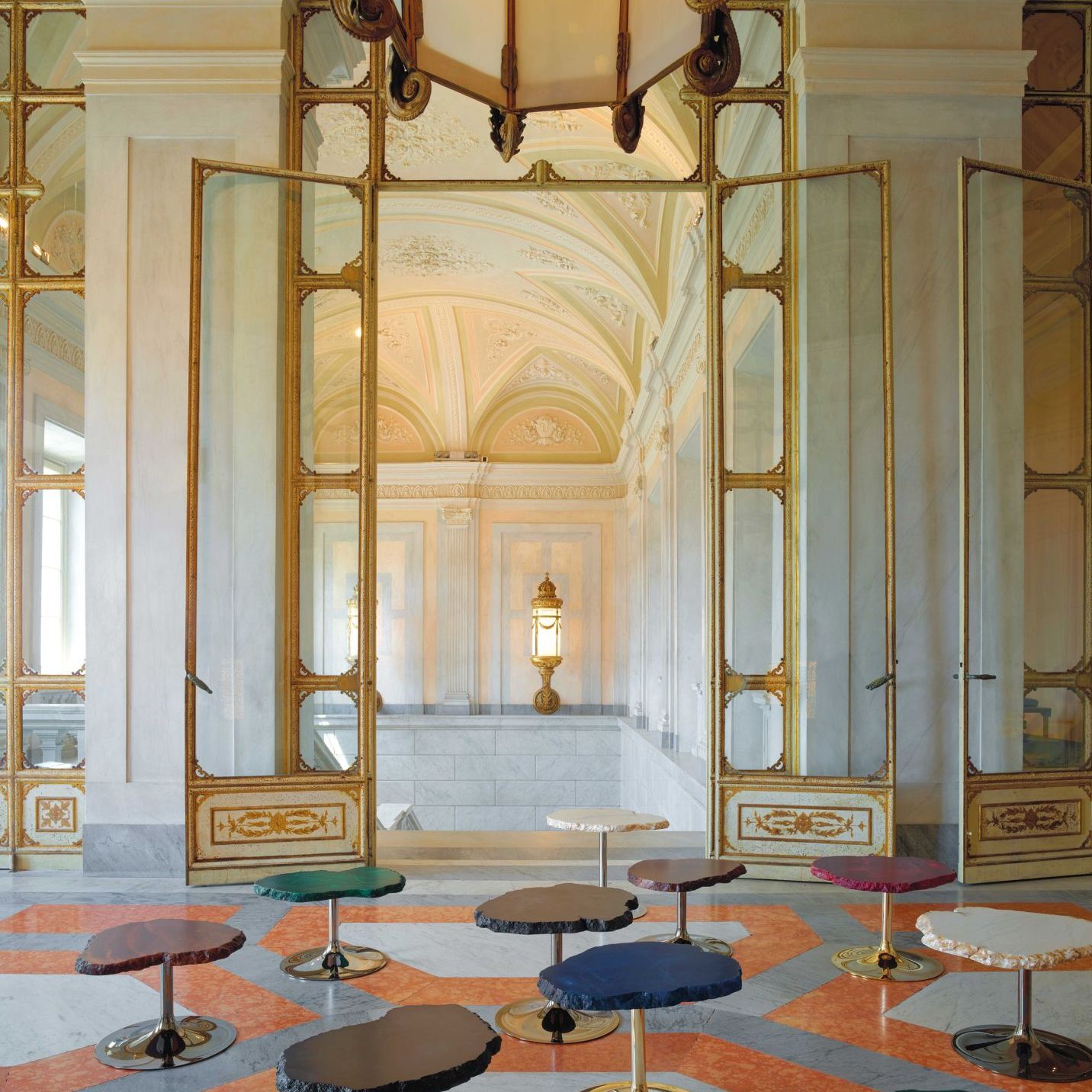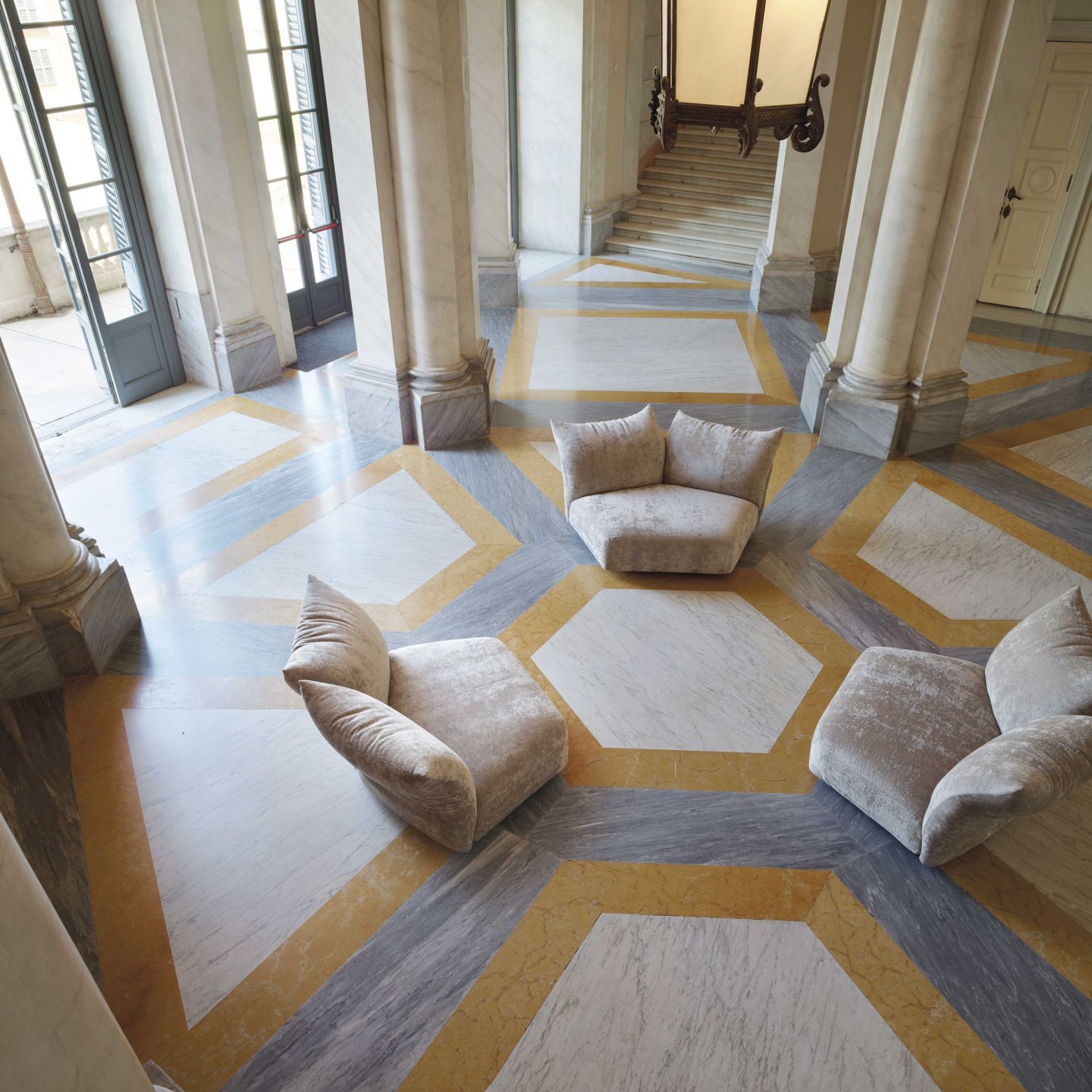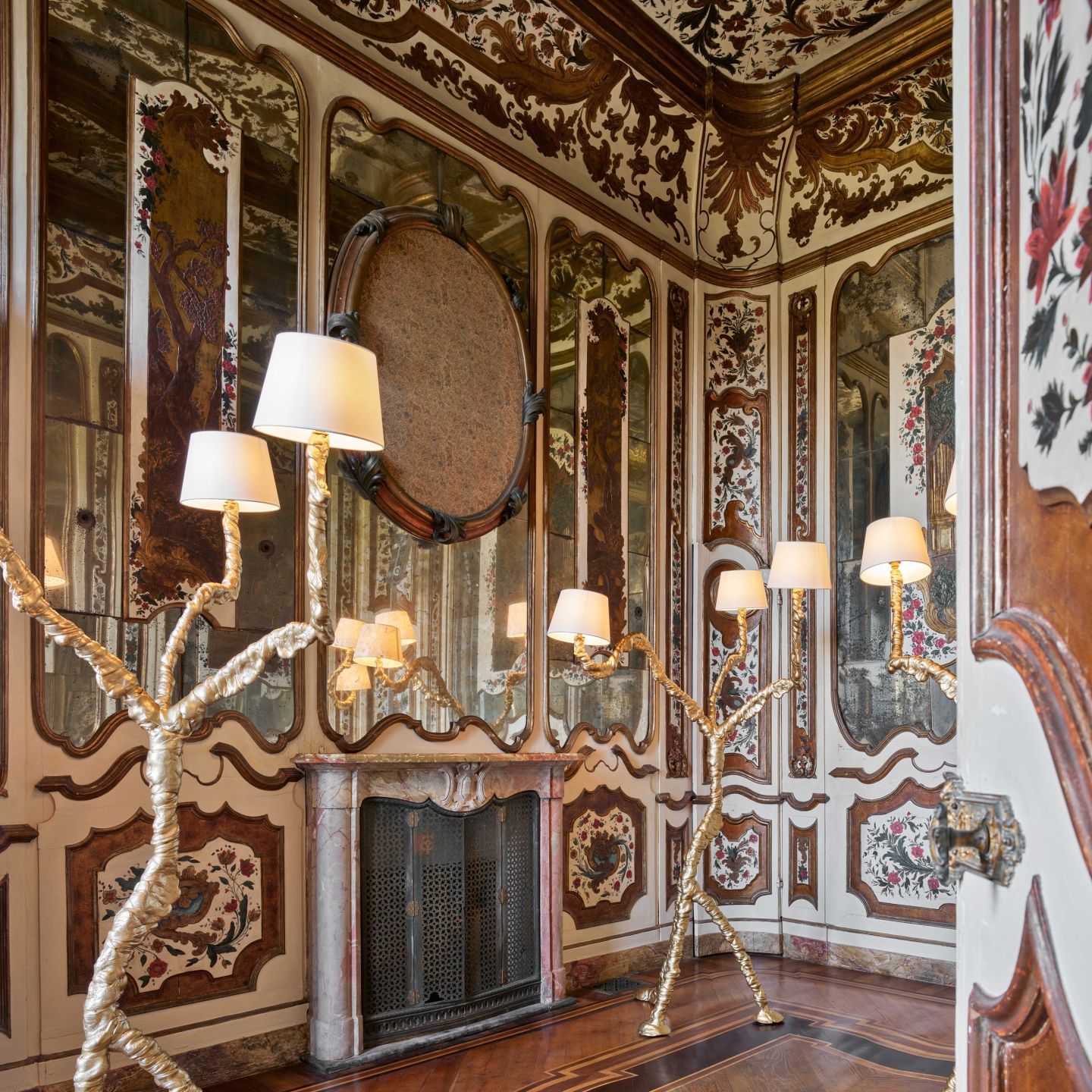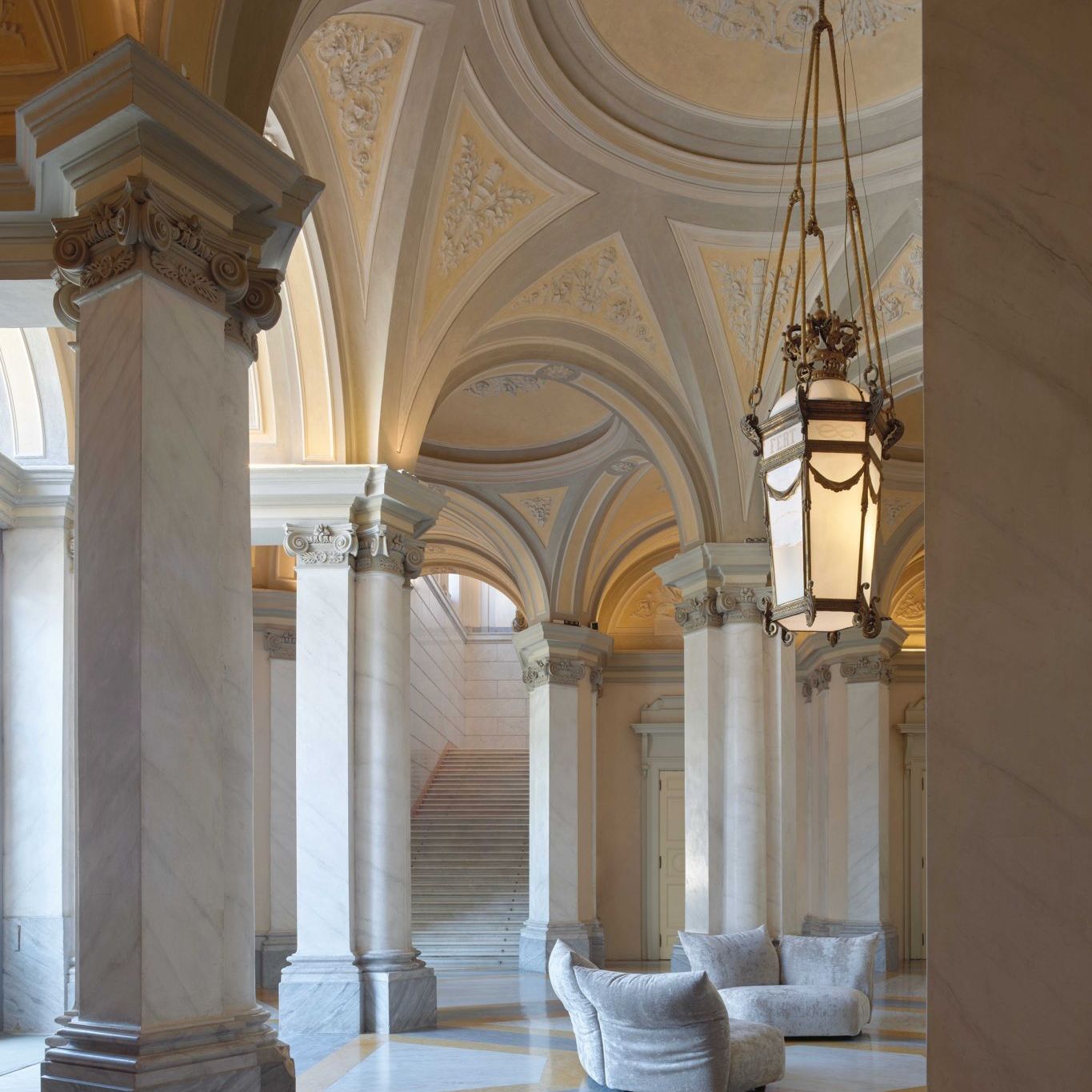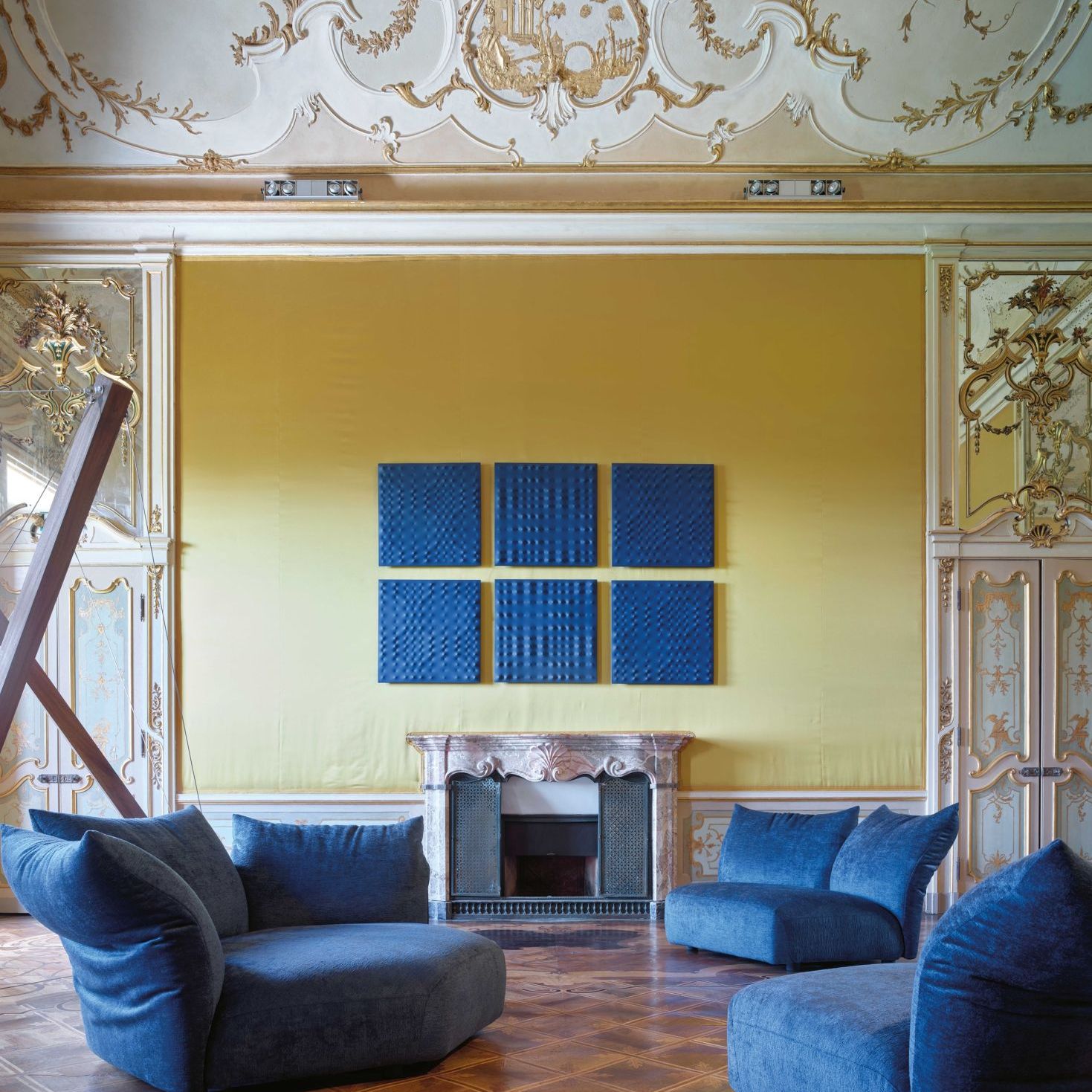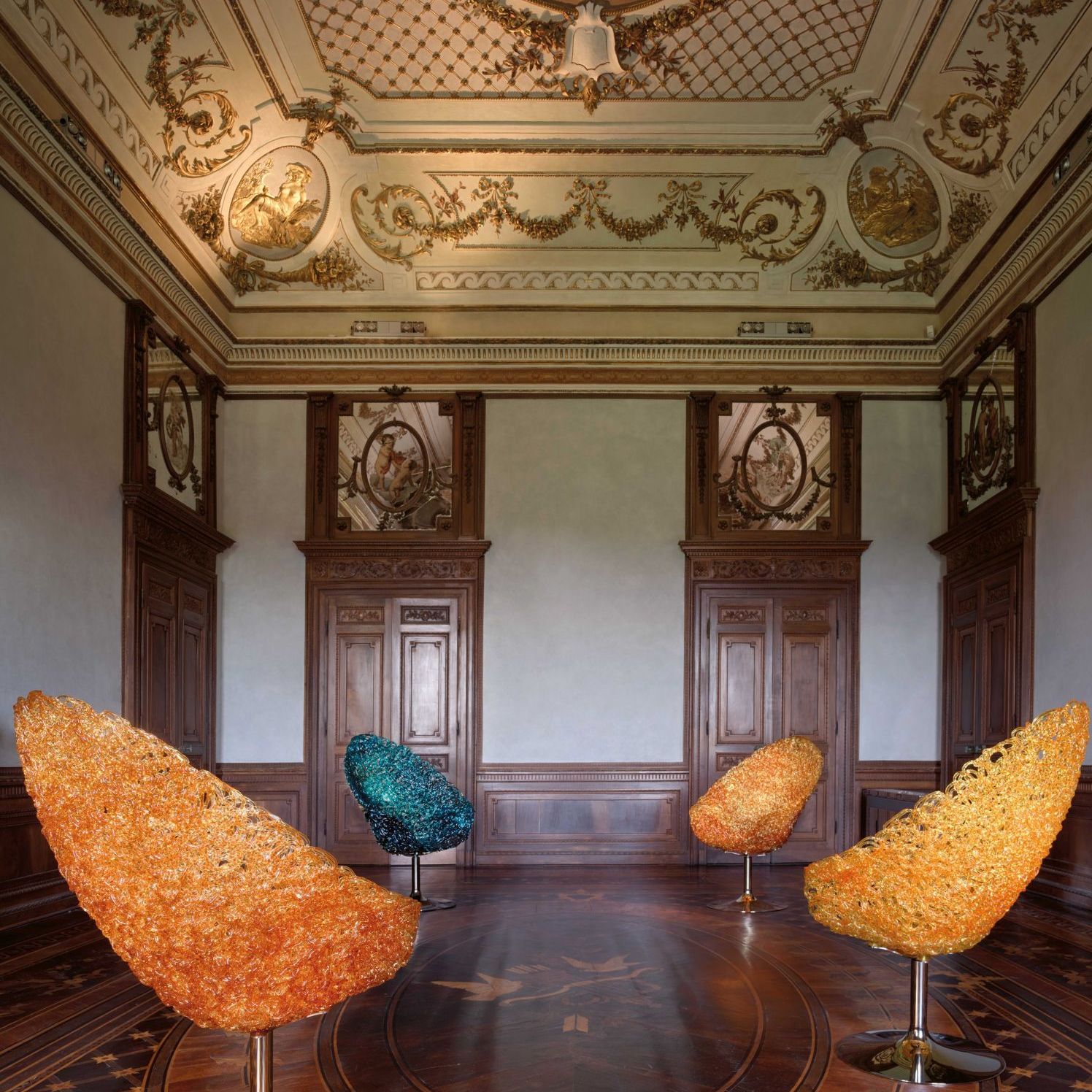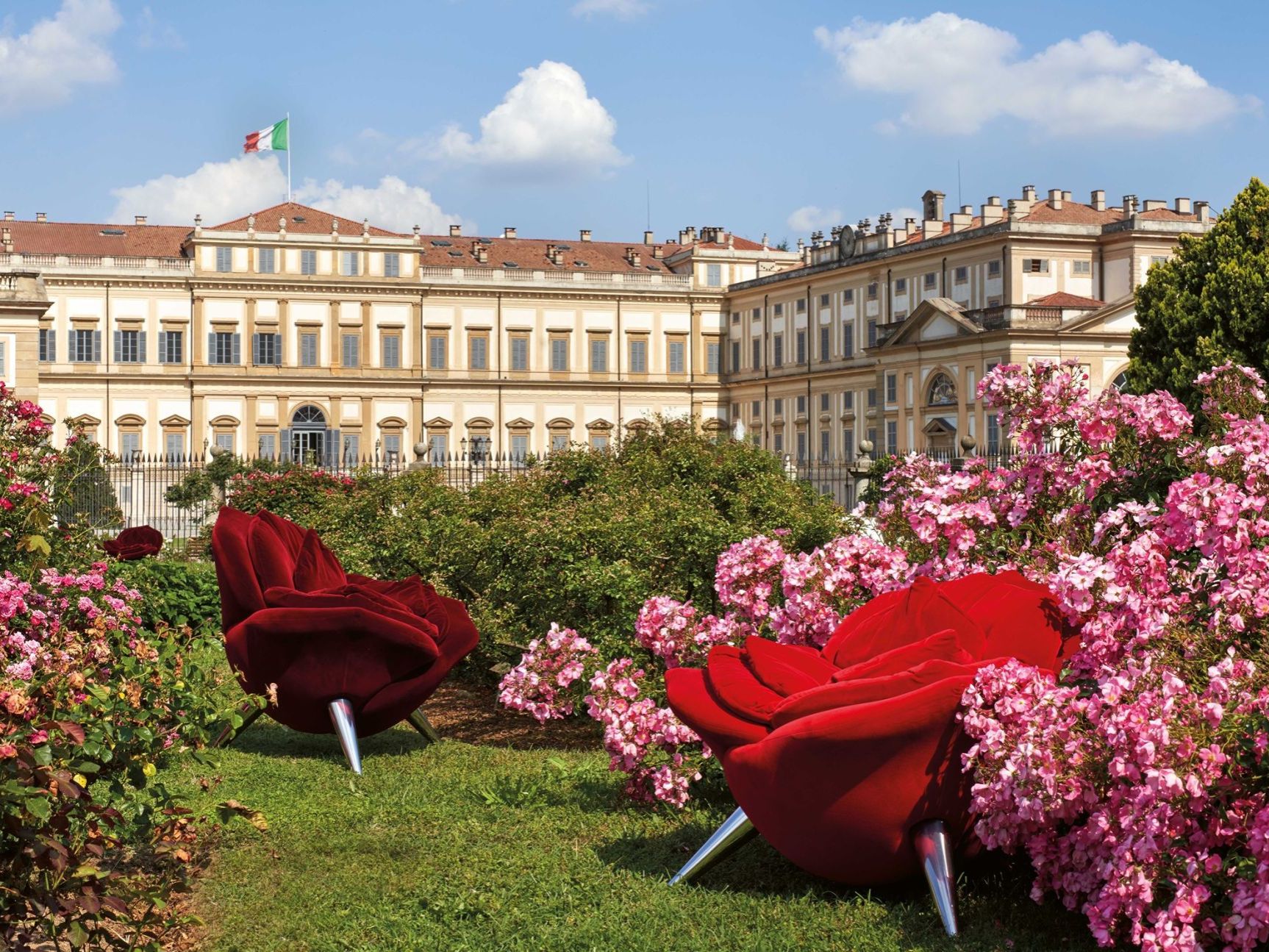
Rose Chair. The armchairs flower among four thousand varieties of rose in the Avancorte opposite the Orangery.
October 2023
Cristina Mazzantini
Contemporary at Villa Firenze
And the Reggia Contemporanea Project
Monza's Villa Reale and its seven hundred hectares of park present a marvellous synthesis of nature and culture in a captivating historical context. The Vanvitelli-style architectural complex was built between 1777 and 1780 by the Imperial royal architect Giuseppe Piermarini for the Archduke Ferdinand of Habsburg D'Este, as a place for recreation and delights. Shortly afterwards, amid the maelstrom of Napoleonic events, Luigi Canonica from Ticino created the park for Viceroy Eugene of Beauharnais. The Palace was erected as a symbol of Austro-Hungarian empire magnificence, but subsequently witnessed alternating times of splendour and abandon in a rapid succession of tenants and owners. These went from Viceroy Giuseppe Ranieri of Habsburg-Lorraine to General Radetzky's troops, Maximilian I of Habsburg-Lorraine and, in the end, King Umberto I of Savoy, whose assassination in 1900 eclipsed the Villa's royal destiny forever.
During its almost 250 years the building has been subjected to profound transformation and while the facies or general appearance established in Piermarini's design remains unchanged, with an elegance and majesty that continues to amaze today, the Palace has had to reinvent itself several times.
It is a little known fact that in 1923 the International Exhibition of Decorative Arts was inaugurated in Monza's Villa Reale, concurrent with the opening of the Monza University of Decorative Arts - later renamed ISIA, Higher Institute for Artistic Industries. The exhibition was successful, and various versions were curated in the Villa Reale in 1925, 1927 and 1930, going on to later become the renowned Milan "Triennale", after moving to the Lombardy capital. All these many changes shaped a variegated identity. Habsburg neo-classism and a Savoy ensemble in the floral style are tied together by a quality of artisanship that can be thought of as a precursor of design, and one can sense the pull to contemporary art. The troubled history has etched a variety marks into the place's physiognomy, but without creating the roots of a precise identity. Interiors have been deprived of almost all their works of art and furnishings, either destroyed or removed, leaving only the grandeur of the original structure.
Against this background the Villa Reale and Monza Parco Consortium, thanks to President Paolo Pilotto's dynamic vision and to the impulse of the General Manager Giuseppe Distefano, launched the project Reggia Contemporanea, following the example of Rome's Quirinale.
Edra participated in the initiative with two splendid works by Jacopo Foggini, intent on enriching the noble floors' atmospheric settings with works of art and design that testify to excellence in Italy's most recent creativity. Surrounded by Giocondo Albertolli's stucco work, on inlaid floors by the Giuseppe Maggiolini workshop, one after the other, works of art by artists of the calibre of Afro and Pietro Consagra, Piero Dorazio, Enrico Castellani, Francesco Messina, Mimmo Rotella, Emilio Vedova, Paolo Scheggi, Maria Lai and Gastone Novelli were displayed by the side of site-specific installations created by Emilio Isgrò, Grazia Varisco, Giovanni Frangi and Chiara Dynys. Together with works by Luciano Ventrone, Agenore Fabbri, Gino Marotta, Bertozzi&Casoni, Davide Rivalta, Pietro Ruffo, Massimo Listri and Michele Ciacciofera. Exhibited works from the field of design began with pioneers like Gio Ponti and Piero Fornasetti, continued with the big names of architecture such as Piero Lissoni, Michele De Lucchi, Gaetano Pesce and Antonio Citterio, alongside work by several other protagonists of the design world such as Giorgio Armani and marionanni, Aldo Rossi and Vico Magistretti, Alessandro Mendini and Francesco Binfaré, Franco Raggi and Nanda Vigo, Fabio Novembre and Jacopo Foggini .
Reggia Contemporanea, which was presented on the occasion of the first Festival of Regions, and which saw the presence of Italian President Sergio Mattarella, has just been inaugurated.
Before completion of this new curation of Palace spaces, Edra transformed Villa Reale into an original and wonderful setting for several installations. For several hours, like a "midsummer dream", the architectures were immersed in a dreamlike atmosphere, flowing freely into a dimension of fantasy.
This illustrated report documents the event, manifesting the desire to play with contrasts between the backdrop's classical rigour and a contemporary fluidity in the design that brought spaces to life, weaving the history of the Palace with the quotidian qualities of living in today's spaces. In a discerning search for balance between worldliness and poetry, Edra drew on historical context as a source of invention, presenting the astonishing variety of ideas and forms that are part of its production, and creating resonances with new works of art.
In the Avancorte on the edge of the park's green oasis, a leap of imagination has enlivened Niso Fumagalli's fragrant rose garden. In this secret garden, adjacent to the Villa, amid four thousand botanical rose varieties that festively bloom each summer, the Masanori Umeda's Rose Chairs with decidedly oversized soft red velvet petals. In the Atrium of the Staffieri, the modules of Francesco Binfaré's Standard sofa were set like gems in a geometric octagonal lattice of polychrome marble. Facing the Scalone d'Onore stairway, a multitude of Cicladi tables, while in the exotic atmosphere of the Japanese sitting room, the golden stem of the Ines lamp was camouflaged with the refined golden floral motifs. Who knows if after the last fateful click of the camera, Edra wished to continue the fun of positioning sofas, armchairs, tables and floor lamps here and there, in the Villa Reale's twenty-two thousand square metres of usable floorspace.
Perhaps also converse, pleasantly, with the beauty of antique frescoes and stuccoes, with installations and contemporary artworks timidly and gracefully seeking a permanent home in Villa Reale's approximately seven hundred rooms. Even though, as Baudelaire observed, "imagination is the queen of truth, and the possible is a province of the truth" we cannot know the answer.
However we at Edra invite our readers to go beyond the imaginary and visit Monza, to discover the real enchantment of Villa Reale, the Parks - and the collection of works in Reggia Contemporanea.
 |
Cristina Mazzantini Architect, curator, lecturer at the Milan Polytechnic and author of essays and volumes, she carries out professional and research activities especially in the field of protection and enhancement of cultural heritage. She is consultant to the General Secretariat of the Presidency of the Republic, she collaborated with the administration of the Chamber of Deputies, FAI, the Sicilian Region and Rai-TG2. She was a member of the Italian National Commission for Unesco and President of the ISIA of Faenza. |





